There has always been a natural order of things: white wine with fish, red wine with meat, and beer with everything. It’s the same with shocks: air for trail and coil for DH… but are times changing?
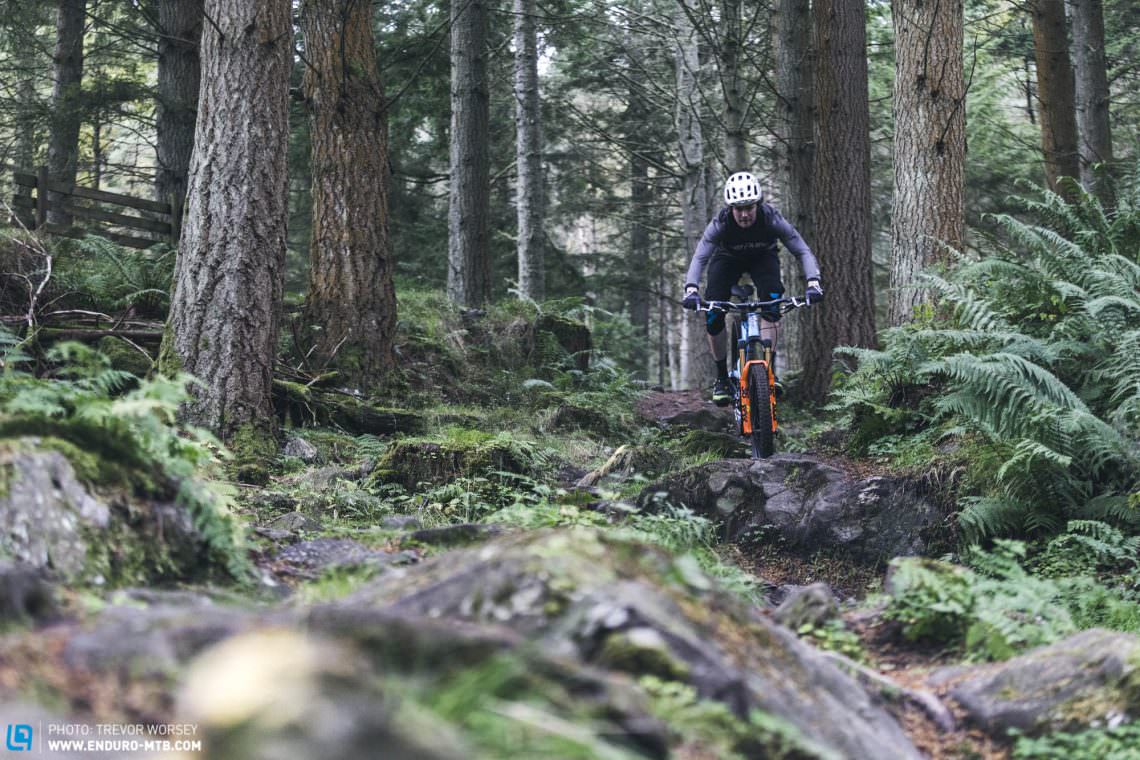
We don’t have to be rocket scientists to know that steel is heavier than air, and indeed traditionally coil shocks have been heavy beasts. However, the latest range of distinctive orange Super Light Steel (SLS) springs from Fox help the formidable 595 g DH2X coil shock tip the scales only 101 g heavier than their leading 494 g FLOAT X2 air shock; the addition of a two-position damping switch to stiffen out the pedalling platform adds up to a very interesting proposition for aggressive trail riders too. But is a coil shock always better than a air shock?

A spring is a spring, right?
On the face of it, there are a lot of similarities between air and coil shocks. Both use a spring to absorb energy from an impact. Both store the energy before it’s turned into friction and heat by oil flow through the damper, ready for the next hit. However, the similarities end there. A coil spring has a linear spring rate, meaning the compression force increases in a linear relationship with the distance compressed. If it takes 300 lbs of force to compress a coil spring halfway, it would take 600 lbs to compress the whole way (with the exception of progressive wound springs). An air spring, on the other hand, is progressive; the compression force required increases exponentially through the stroke, making it harder to compress the spring near the end of the stroke.
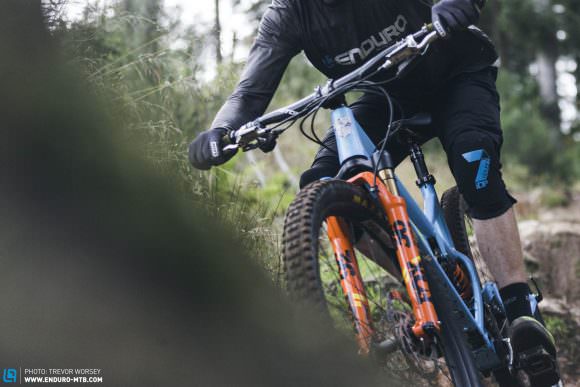
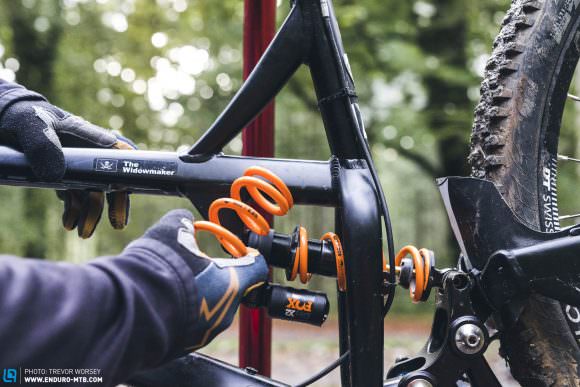
Knowing this, we can see why changing from air to coil or vice versa is not as simple as bolting a shock into any bike frame. Most trail bike frames are designed with a linear leverage rate to take advantage of the progressive curve of an air spring shock; therefore, adding a linear coil in this scenario would result in a shock that blows through its travel too easily. As such, it is very difficult for bike designers to build a frame that works well with both an air and coil shock, but there are some models that will happily work with coil. For this test we used two Pole Evo-Link 140’s which have a leverage ratio that works pretty well with both air and coil. So what are the benefits of each system?
Air vs. Coil: Air
If an air shock was a superhero, its super power would be tunability. With an air shock you have the ability to adjust every aspect of the shock’s function. With the addition or removal of internal volume spacers you can adjust the air spring curve to provide more or less progression, and precise adjustments can be easily made to the air spring pressure to accommodate different rider weights or heavy backpacks, etc. The latest generation of air shocks also feature bigger negative springs to improve sensitivity over small bumps.
+ Highly tuneable
+ Adjustable spring rate
+ Lighter
+ Progressive
– More seals
– Heat buildup
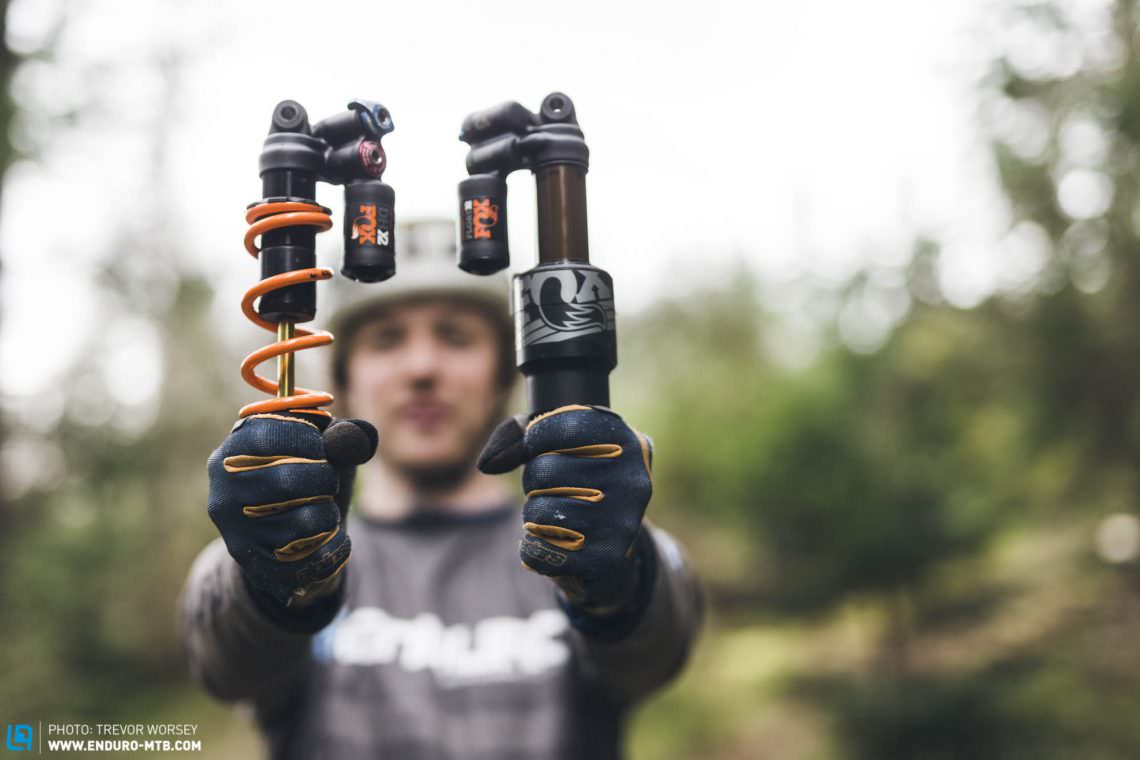
Air vs. Coil: Coil
Coil shocks do not have to hold air under high pressure in the spring, so require fewer seals. Seals add friction to the movement of the shock, so a steel coil requires less breakaway force to start moving and is more sensitive over small bumps and imperfections. This improved sensitivity boosts grip and keeps the rear wheel tracking the ground, improving feel and control. A steel coil spring is better at managing heat on long descents, and generally is simpler to maintain. The disadvantage of a coil shock is changing rider weight will often require the purchase of a new steel spring with a different spring rate.
+ Small bump sensitivity
+ Massive traction
+ Minimal heat buildup
+ Simpler operation
– Not for all bikes
– Heavier
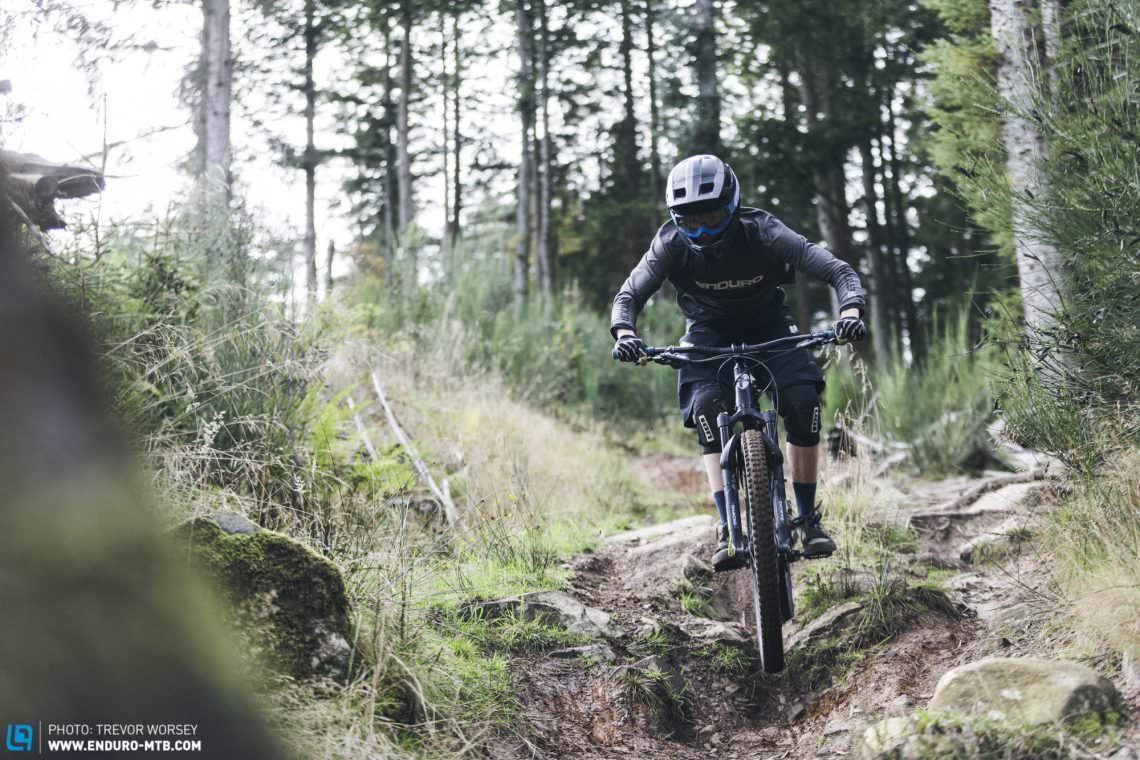
You cannot fool a stopwatch
So, can a cutting edge air shock match the performance of coil on rough trails? Armed with two bikes of the same model, two fast riders, two shocks, and timing gear, we headed to the gnarliest track we knew. A fast run on the challenging track, littered with rocks the size of microwaves and more square edges than a bag full of lego, would take just under a minute. The track is long enough to highlight differences in performance but short enough that the riders could hit the same lines again and again without mistakes.
After a full day learning the track, getting lines dialled, and extensive optimising of the air and coil shocks, both riders were putting down consistent times with consecutive runs just a second or so apart. With something as subtle as suspension performance, we knew the timing would be tight, so repetition would be king. Over fifty runs of the track were completed over the course of two day, with precise timing and extensive feedback recorded. Shocks were hot-swapped randomly between bikes throughout the session to avoid the bias of track-learning or fatigue. Timing was blind and riders rode at a speed that allowed them to precisely hit the same lines again and again without deviation. The better the suspension performance, the faster the riders could accurately ride.
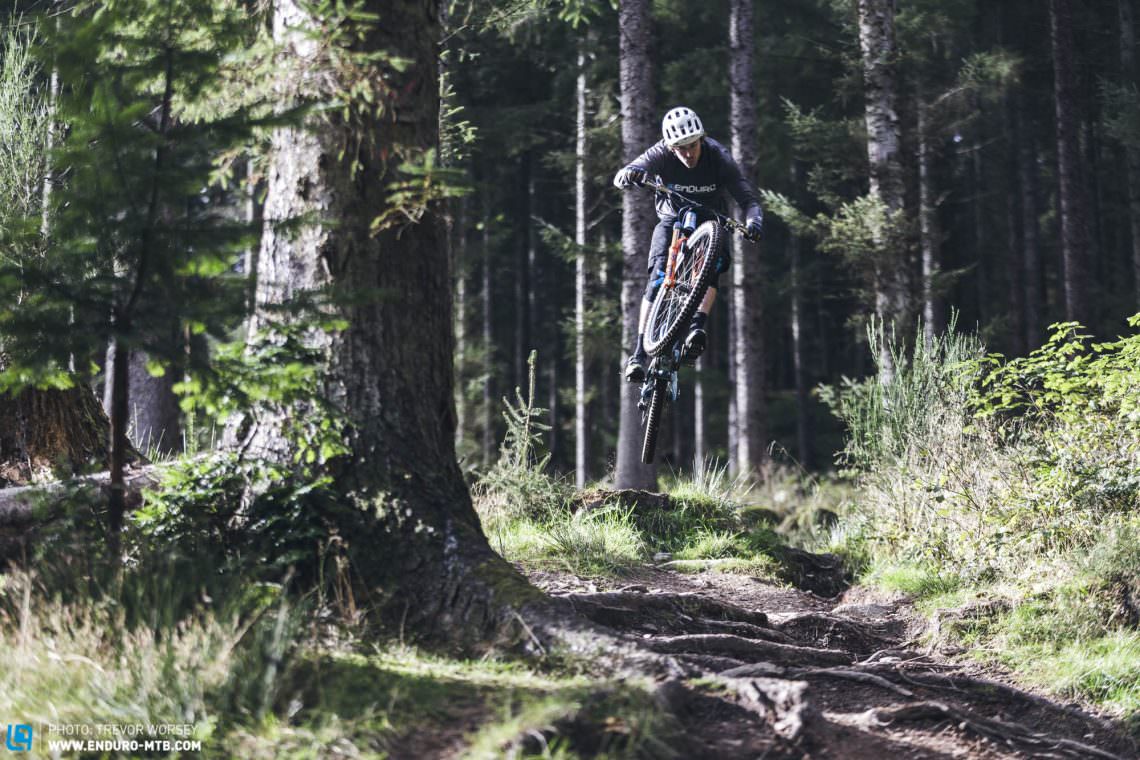
So which is faster, air or coil?
Lap after lap the times were recorded. If a line was blown or a mistake made, the run was discounted. Short pedal sections revealed any inefficiency in the shock, and savage, square-edged hits hammered the o-rings to the end of the shafts. When the results were calculated it was close… very close. The fastest rider recorded an average time of 52.76 ± 1.20 seconds on the Fox FLOAT X2 air shock and 51.66 ± 1.02 seconds on the Fox DHX2 coil – interesting, but hardly a significant result. The second rider recorded similar results with 64.51 ± 3.60 seconds on air and 62.68 ± 3.57 seconds on the coil shock. Both riders set their fastest times on the coil shock. So is the battle won? Should we all change to coil shocks?

Setup*
| 2018 Factory Models | Spring | HSC | LSC | HSR | LSR |
|---|---|---|---|---|---|
| Fork: FOX 36 Float | 73.4 psi | 14 | 14 | 11 | – |
| Air shock: FOX Float X2 | 160 psi | 18 | 18 | 6 | 20 |
| Coil shock: FOX DHX2 | 500 lb | 10 | 11 | 10 | 20 |
* Fully equipped rider weight 78 kg, all settings are clicks from fully closed
Looking at the optimised setups on both air and coil, with air we ran the high speed rebound quite slow to help control the bike’s recovery after the big hits from the square-edged rocks, with the low speed rebound very fast to help find traction in the flat and off-camber turns. We found on the coil we needed to run a little more high and low speed compression to control the more linear progress of the shock through its stroke under deep impacts.
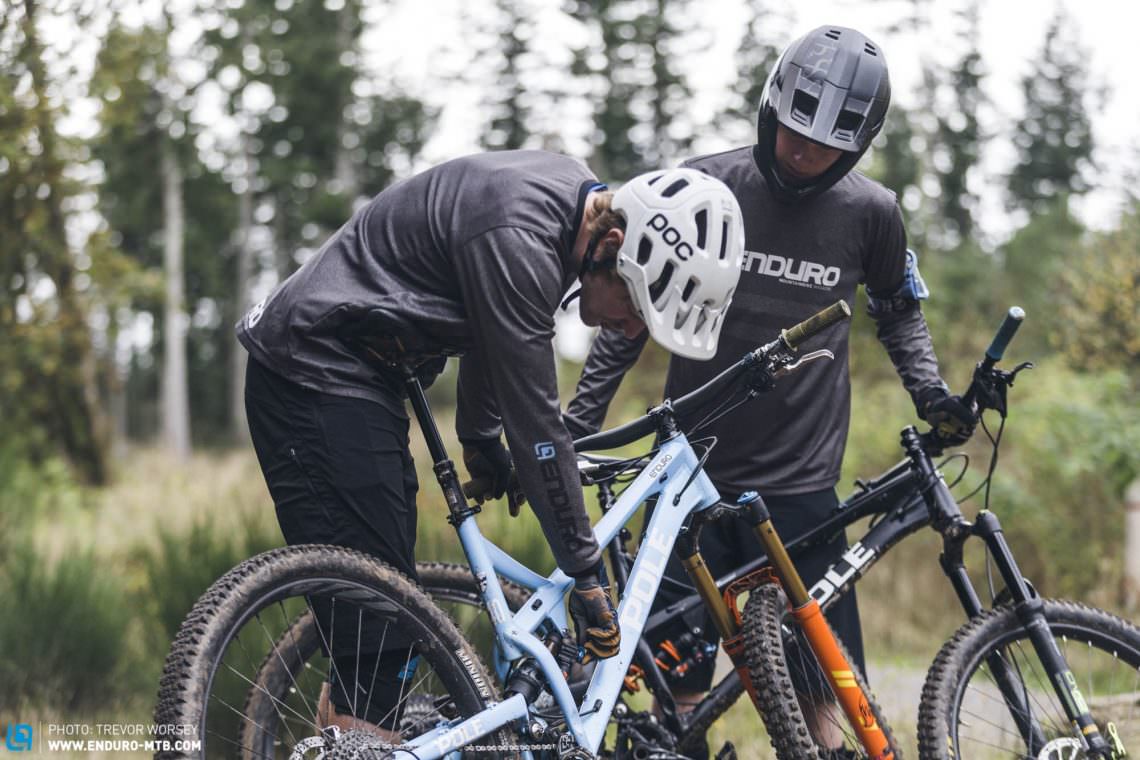
It’s all about feel
While the timing was close, hot-swapping the shocks revealed the way the shocks performed was anything but similar. Showing its DH credentials, the Fox DHX2 coil shock was in a class of its own when it came to smoothing out big, square-edged hits – like water, the bike flowed over the boulders without fuss. The incredibly sensitive small-bump performance of the coil generates massive grip through flat turns and tracks the ground more intensely, but did leave the testers feeling that they were glued to the ground. Although not as sensitive, both testers commented that the Fox FLOAT X2 air shock offers more support and provides a ride that is more playful, making it easier to lift the bike into the air… and it was snapping at the heels of the coil when it came to chasing seconds.

Crowning the champion
Hypothesis has become fact: we were faster down our formidable test track with a coil shock. However, when it comes to the battle for trail bike supremacy, there can only be one winner, and that winner is the Fox FLOAT X2 air shock. What? Why? Taking feel and versatility into consideration, as an all-round aggressive trail shock the Fox FLOAT X2 provides a much more tunable ride which is livelier and easier to optimise – and when it comes to the stopwatch, the times are closer than two coats of paint. Air is the people’s champion, fast, versatile, and playful. The reduced versatility and compatibility mean that even in its slimmed-down form, coil should be left for those who agonise over milliseconds.
Did you enjoy this article? If so, we would be stoked if you decide to support us with a monthly contribution. By becoming a supporter of ENDURO, you will help secure a sustainable future for high-quality mountain bike journalism. Click here to learn more.
Words & Photos:












